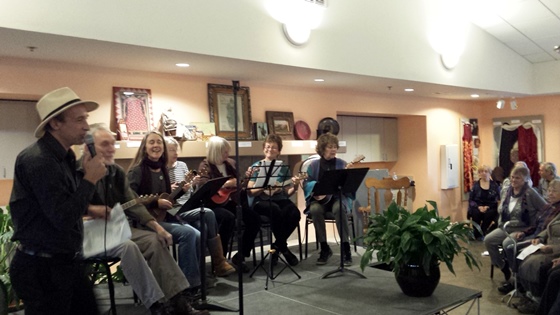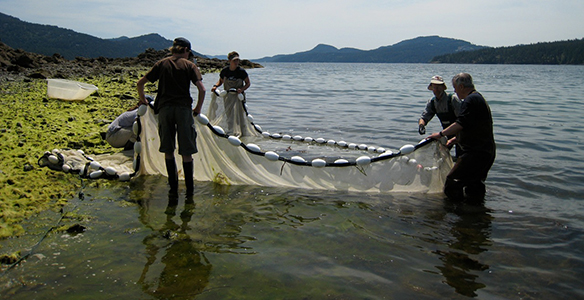||| FROM BILL BANGS |||
Most of us know or have heard of someone who has been a hardworking neighbor in our county for many years and who has lost their long-term rental home. Some of these friends and neighbors have been forced to move to the mainland to find housing. And most of us know of at least one business owner/manager who has been forced to curtail services because their staff can’t find housing. Please check out the recent broadcast from KUOW to hear some examples. These stories and hundreds more point to a serious problem for everyone in the county.
Over the past two decades, the county population has grown by nearly 4,000 residents while the prime-age workforce population has shrunk by more than 1,000. The number of non-resident housing units has increased by 62% while the number of long-term rental units is shrinking. The demand for goods and services is increasing while the capability to provide supply is decreasing. Our community is trebly diminished as all residents suffer from a reduced quality of life, a diminished experience for visitors, and a reduced diversity and vitality of this community.
One of the primary causes of this complex problem is the severe lack of housing available to the working community. Even though San Juan County has the eighth highest median hourly wages in the state (esd.wa.gov), one-third of county households are spending more than 30% of their income on housing. This problem is neither new nor unique to San Juan County. In spite of numerous workshops, concerns expressed by county staff, local and outside studies, a fifteen million dollar housing fund, and the heroic efforts of our community land trusts, the problem continues to get worse.
Sensible regulations regarding vacation rentals can make a dent in this problem, but we need significantly more low-to-moderate cost rental housing. Is there a way to do this while preserving our scenic landscape and rural character? Clusters of modest homes, including multifamily units in designated growth areas such as April’s Grove in Eastsound, show a promising path forward. Other communities have successfully welcomed tiny home villages and well-regulated neighborhoods of high-quality manufactured homes. Is there the collective will to form a coalition of our local government, non-profit organizations, and private citizens, including the non-resident, seasonal homeowners, to make this happen?
I estimate that our county could use 1,300 housing units today, restricted to working residents. Another 600 will be needed by 2036. I have written a short white-paper describing these issues and my estimates in some detail: . I welcome comments, questions, and constructive criticisms to that paper.









Bill, there has been a severe growing gap from subsidized housing and the lower to middle income working class. As an employer, it’s hart wrenching to hear, I can’t make more than x or my rent goes up..or I may loose my home. This is not criticism on behalf of the worker.. which only works part time, but the need for a different discussion. The shift of conversation needs to get foothold with whatever can motivate landowners/ investors, and the County officials to allow a different vision to resolve this growing gap.
The service class is up against a wall, with little support to climb over around or through it.
I have mentioned to a few stakeholders of trying something different, almost like a boarding house or structured Condo association, where there’s skin in the game for the occupants. If you do as you have agreed, your good.. if not, based on the articles you agreed to you decide to move on.
This sounds harsh, but the only way stakeholders would agree to participate.
I’m looking for such property to at least see if our Community is willing to support it. It has everything against it, by the old way of math.. but the greatest return for our Community if structured well, there’s no question of the need, it’s how do we connect the needs with the right resources. Onward.
Having participated in this county for over forty years, it’s interesting and sad to see how, like the swinging of a pendulum, the need for low and middle income housing is “discovered,” in an economy a large chunk of which is the sale, resale of real estate and the resulting and upward spiral of prices . I agree with you, Bill, that private money has to come in a big way, but land is expensive and selling inexpensive housing on expensive land is hard to make pencil out when the available and far more profitable alternative is McMansions attempting to look “rural..” There is also philosophical resistance on the part of private developers that the government should not step in and compete with them at taxpayer expense.
Some local employers have provided housing for their employees, a both necessary and well-meaning half step in the right direction. But this drains working capital from the business, and ties housing to the particular employer. It’s easy to say “we need to do better.” The hard part is for those with access to capital being willing to profit less than they could otherwise. Capitalism does not reward such behavior.
One possible solution to relieve the shortage is to update our zoning code…allow subdivision of larger parcels ….allow greater density of units …..allow one acre homesites in planned subdivisions so that working families can buy and build their own homes. Unless we can offer smaller parcels of land,the price per acre will not be within the reach of the workers. Who need the land to build upon.
To restrict a 5…10…15…or 20 acre parcel from building more than one home plus an ADU is old thinking…we need revision of our zoning code as well as speed up the permitting process.
Sure there are valid concerns about available water and sewer but these can be handled by allowing roof catchment systems( common around the world except here) and individual septic systems limited to one dwelling per acre…..This is not rocket science …It just needs the Will of the population to stir up the county council.
An insightful look at one of our most critical problems. And the detailed analysis in Bill’s linked white paper is well worth the read. One closely related question is, “Can we provide the necessary housing while preserving our scenic landscape and rural character?” The answer is not opening up more of our rural land to one-acre house lots, but rather developing much more densely within the Eastsound Urban Growth Area as designated by the County Council under the State Growth Management Act, or encouraging real cluster development outside of the UGA. Also reinstating accessory dwelling units as a right on all lots, but for personal or long-term rental use, NOT vacation rentals.
Bill is right, SJ County needs more rudimentary, economical housing. Historically, folks camped in the woods or on the beach. No more. In the absence of substantive County action, the Land Trusts and Homes for Islanders have produced roughly 350 homes n the past 25 years. Mostly ownership for a narrow spectrum of those with steady work and good credit. What is most needed is modest rental housing in the UGA’s, Eastsound and Friday Harbor, where the jobs and schools are. Some opportunities for public action include:
1. Provide enough adequately zoned land in the UGA’s. Growth in the county is projected to grow by 4,180 homes to 2036 yet there is capacity for only 2,691
dwellings countywide! (HNA Tables 55-1 & 5-15).
2. Provide zoning for RV/Mobil Home park in the UGA.
3. Eliminate the usurious “profit sharing” on County Down Payment Assistance loans.
4. Form a Housing Authority to be eligible for HUD Rental Assistance funds to benefit landlords and tenants.
5. Encourage ADU’s in the UGA’s regardless of “perpetual affordability.”
6. Confine CDBG applications to projects that benefit low income housing, not Public Works.
7. Raise the Real Estate Excise Tax and exempt homes under 1,000 sf.
All that has been accomplished by publicly funding housing is to keep wages depressed for ALL workers, while the only workers that benefit are the few who fit the model and manage to get into subsidized housing. Publicly funded housing primarily benefits the owners and customers of the businesses whose workers live there.
Let the restaurants close if they can’t turn a profit with employees earning a fair wage! If the school can’t get teachers to take jobs because they can’t afford to live here, then their wages will need to go up, which means taxes will need to go up! Maybe we need to get clear about what exactly is an essential job and start paying appropriately for that work, instead of artificially manipulating the economy. Let the system work. Give it time to work. And be prepared for some disruption while the system restabilizes. If a barista needs to make $40/hr in order to keep the coffee shop going, then your overpriced coffee drink is going to get even more overpriced. And you know what? I’m fine with that. What I’m not fine with is tax dollars being spent on funding housing to benefit a few, while being paid for by the many.
Ken–as much as I respect your opinion, I think you’re missing the point on this one. First of all, although I agree with you in principle about fair compensation and raising wages, in the market system you’re advocating that’s going to be a much bigger mountain to climb than focusing on everyone’s right to housing. In a market set by the 1%, or even, here in the San Juans, by the 10% (SJ County median home price, $775,000, compared to $395,000, US, and up 16% in 2021) those
average wage earners (33% of income for rent / mortgage) can never get a foothold.
Second, “affordable” housing–a multi-definitional and confusing term–doesn’t necessarily mean government-subsidized housing–we’re not talking Section 8 on Orcas. The question is how to make adjustments to the market such that developers can still make a profit from, and have an incentive to develop “market-rate” housing affordable to the average wage earner. This involves the base cost of land, financing, building materials, permitting, and…yes, construction labor and profit for the developer. Can it be done, when the market is governed by those who can afford the the $3/4 million and up prices for second homes to be left empty most of the year or used as vacation rentals?…that’s the question; and, hopefully, there are people in this community with the knowledge and creativity to have a conversation, find the answers and a way make it happen.